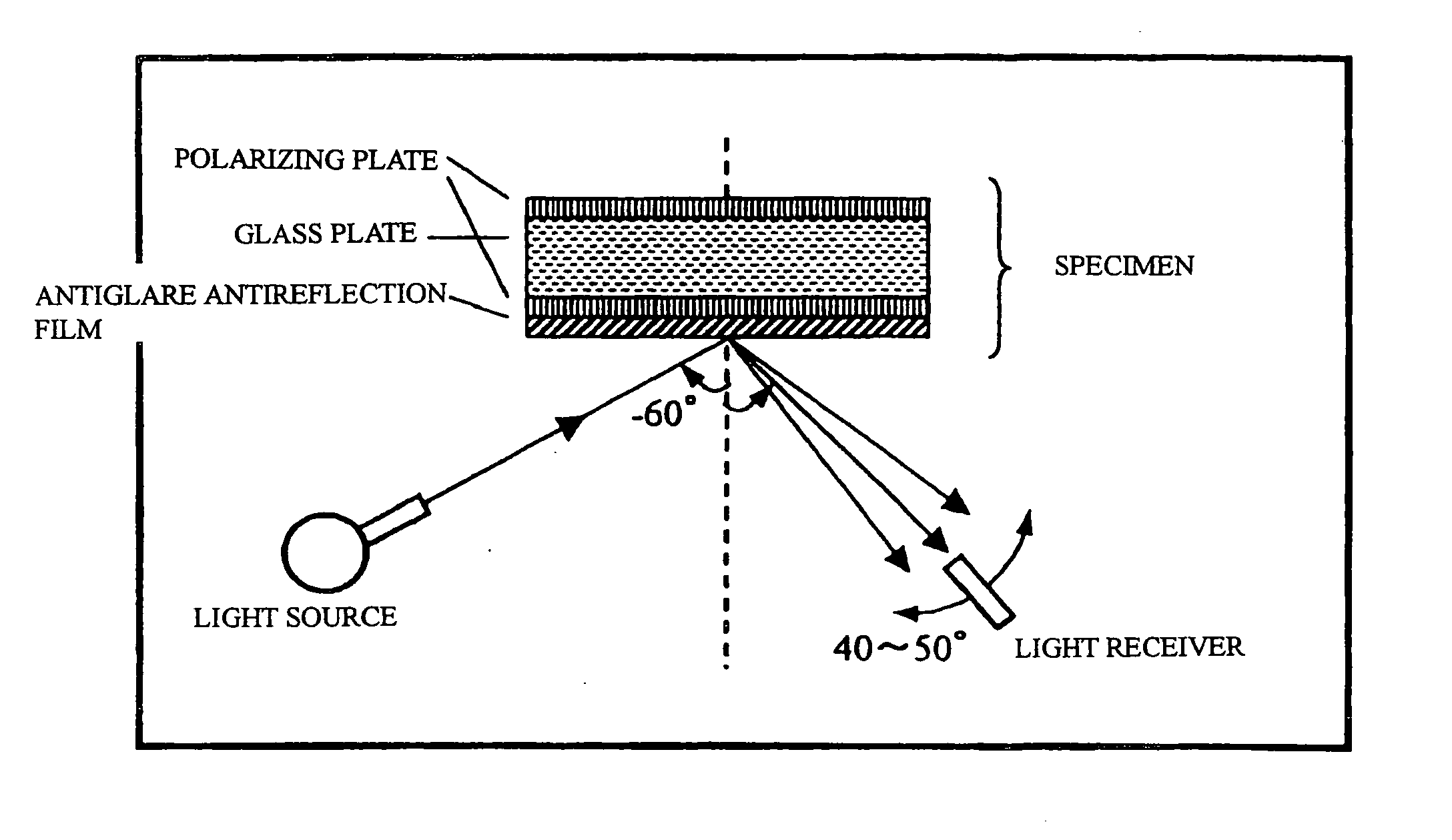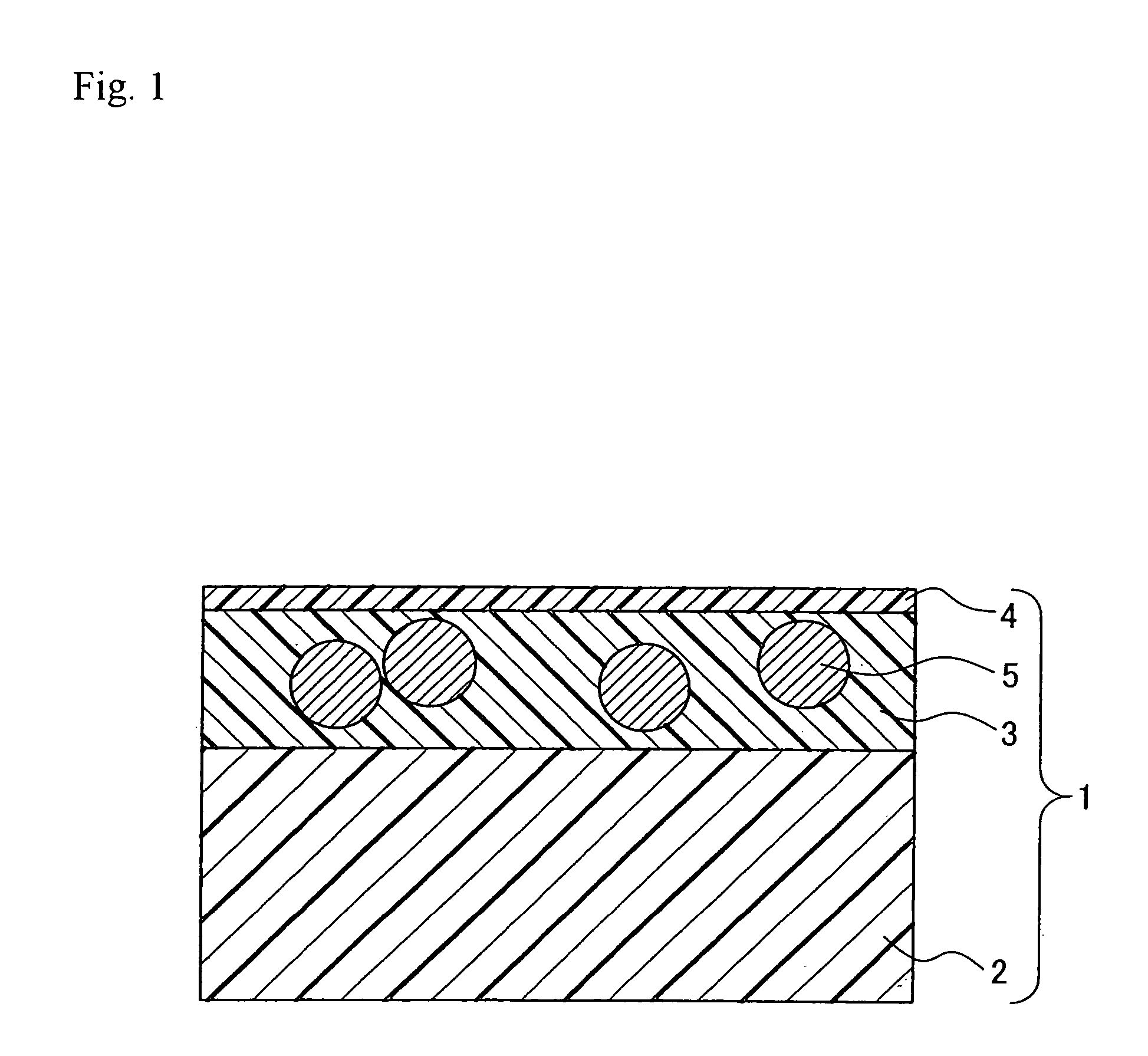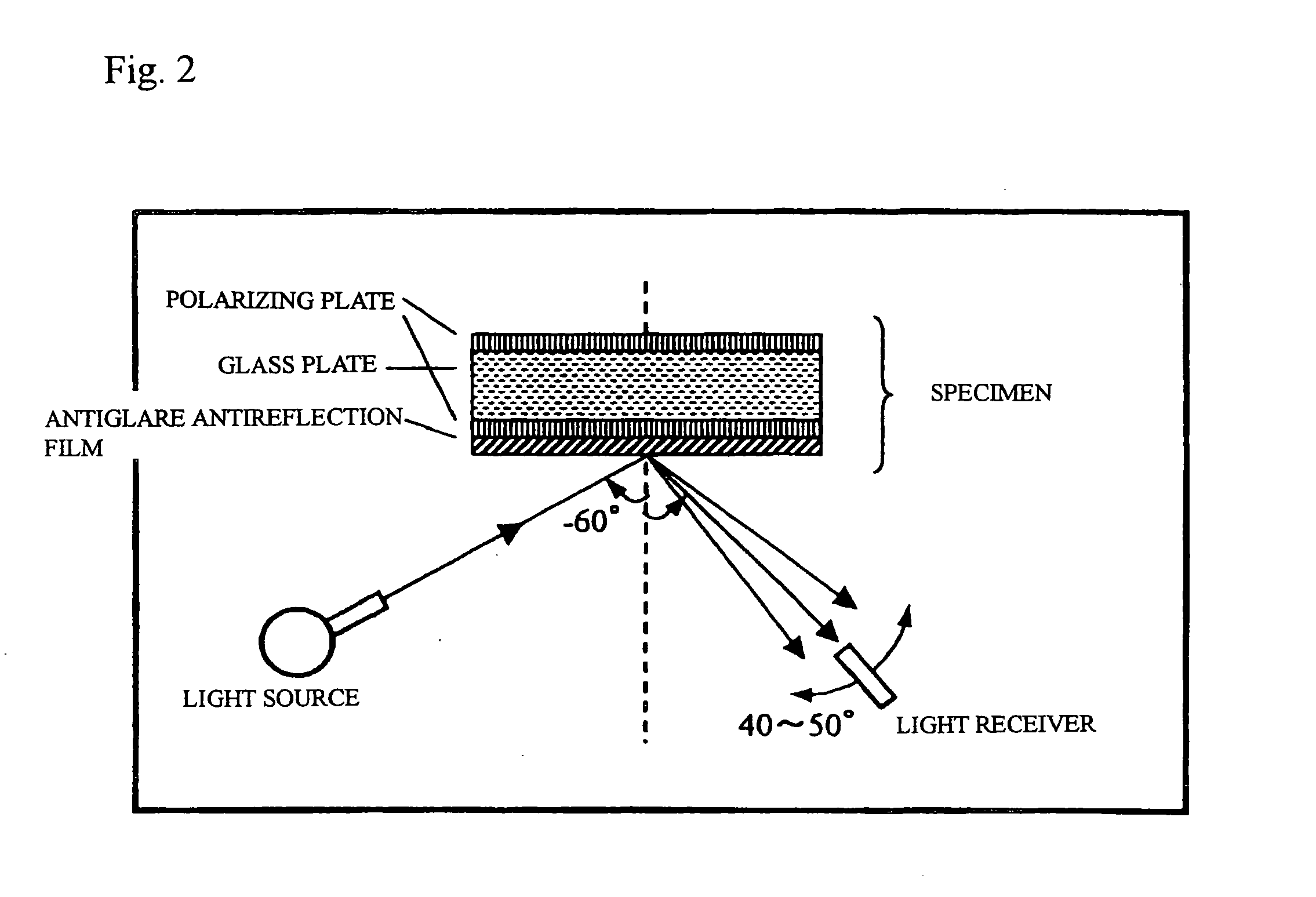Optical film and process for production the same, antireflection film and process for production the same, polarizing plate including the film, liquid crystal display device including the polarizing plate, and liquid crystal display device
a technology of anti-reflection film and production process, applied in the direction of traffic signals, roads, instruments, etc., can solve the problems of fine luminance unevenness as caused, surface shine white, glare, etc., to prevent white blurring of images, reduce reflection, and improve contrast
- Summary
- Abstract
- Description
- Claims
- Application Information
AI Technical Summary
Benefits of technology
Problems solved by technology
Method used
Image
Examples
example 1
(Preparation of Coating Solution A for Internal Scattering Layer)
[0320] 71.0 g of a mixture of pentaerythritol triacrylate and pentaerythritol tetraacrylate (PET-30, manufactured by Nippon Kayaku Co., Ltd.), 3.0 g of a polymerization initiator (IRGACURE 184, manufactured by Ciba Speciality Chemicals), 0.1 g of a fluorine based surface modifier (EP-149), and 11.9 g of a silane coupling agent (KBK-5103, manufactured by Shin-Etsu Chemical Co., Ltd.) were added in a mixed solvent of methyl isobutyl ketone and methyl ethyl ketone, and the mixture was stirred for 60 minutes by an air dispersion device, thereby completely dissolving the solutes. A coating film obtained by coating this solution and hardening by ultraviolet rays had a refractive index of 1.520. 6.3 g of a crosslinked poly(styrene) polymer having an average particle size of 3.5 μm (refractive index: 1.600) and 7.7 g of a crosslinked poly(acryl-styrene) particle having an average particle size of 3.5 μm (copolymerization com...
example 2
[0367] An 80 μm-thick triacetyl cellulose film (TAC-TD80U, manufactured by Fuji Photo Film Co., Ltd.) which had been dipped in an NaOH aqueous solution of 1.5 moles / L at 55° C. for 2 minutes, neutralized and then washed with water and each of the saponified antireflection films as prepared in Example 1 (Examples 1-1 to 1-14 and Comparative Examples 1-1 to 1-10) were made to adhere for protection to the both surfaces of a polarizer as prepared by adsorbing iodine on polyvinyl alcohol and stretching, thereby preparing a polarizing plate. The thus prepared polarizing plates were designated as Examples 2-1 to 2-14 and Comparative Examples 2-1 to 2-10.
[0368] Furthermore, a polarizing plate was prepared by using the foregoing saponified triacetyl cellulose film as a protective film of the both surfaces and was designated as Comparative Example 2-11.
example 3
(Evaluation of Polarizing Plate)
[0369] Each of the polarizing plates of Examples 2-1 to 2-14 and Comparative Examples 2-1 to 2-11 as prepared in Example 2 was stuck in place of a polarizing plate in a viewing side of a liquid crystal television set. As the liquid crystal television set, “LC-37GD4” (MVA mode) as manufactured by Sharp Corporation was used.
[0370] The resulting display devices were evaluated with respect to the following items. The results are shown in Table 4.
(1) White Blurring:
[0371] With respect to an LCD television panel (VA mode) having a definition and an image size as shown in the table, a polarizing plate of the surface side was replaced by the polarizing plate of this Example; the entire surface was displayed black; a naked fluorescent lamp (8,000 cd / m2) not provided with a louver was reflected from the upper direction at an angle of 60° in a dark room; and in the visual observation from the front, the white light state (white blurring) of the entire face...
PUM
| Property | Measurement | Unit |
|---|---|---|
| haze | aaaaa | aaaaa |
| haze | aaaaa | aaaaa |
| haze | aaaaa | aaaaa |
Abstract
Description
Claims
Application Information
 Login to View More
Login to View More - R&D
- Intellectual Property
- Life Sciences
- Materials
- Tech Scout
- Unparalleled Data Quality
- Higher Quality Content
- 60% Fewer Hallucinations
Browse by: Latest US Patents, China's latest patents, Technical Efficacy Thesaurus, Application Domain, Technology Topic, Popular Technical Reports.
© 2025 PatSnap. All rights reserved.Legal|Privacy policy|Modern Slavery Act Transparency Statement|Sitemap|About US| Contact US: help@patsnap.com



